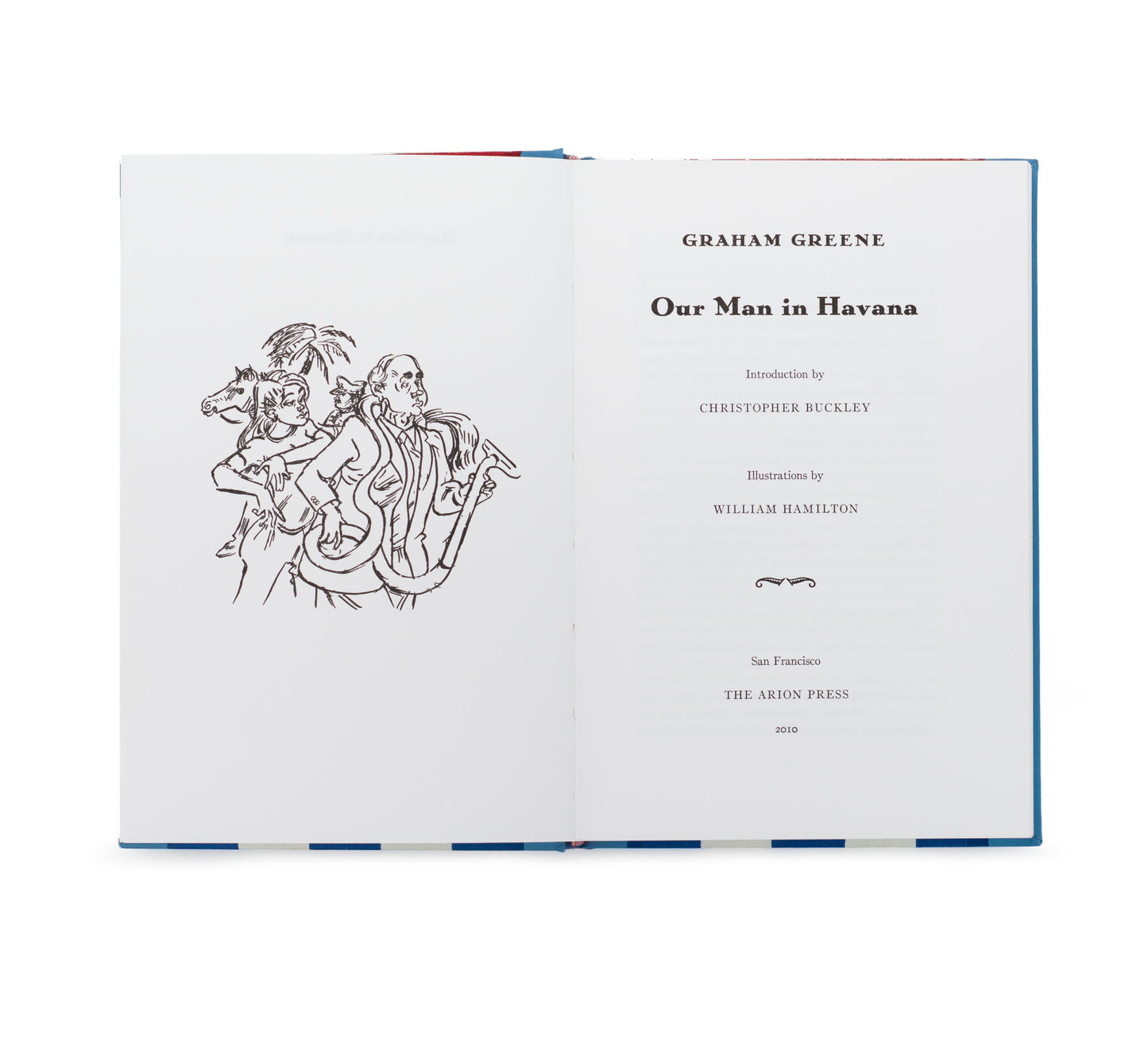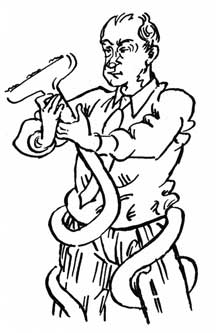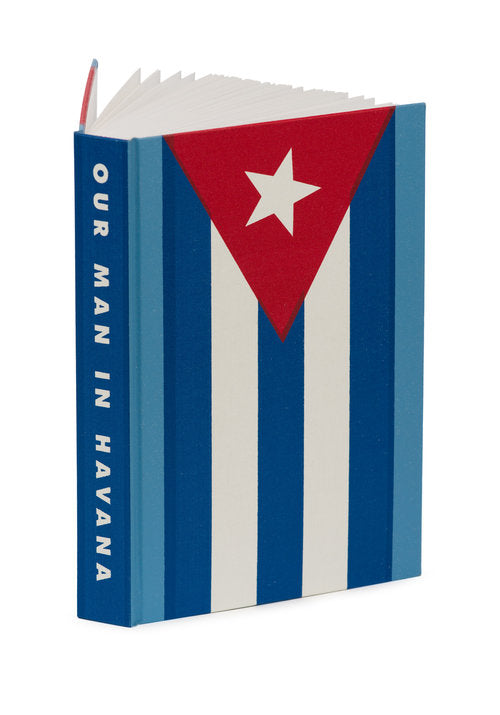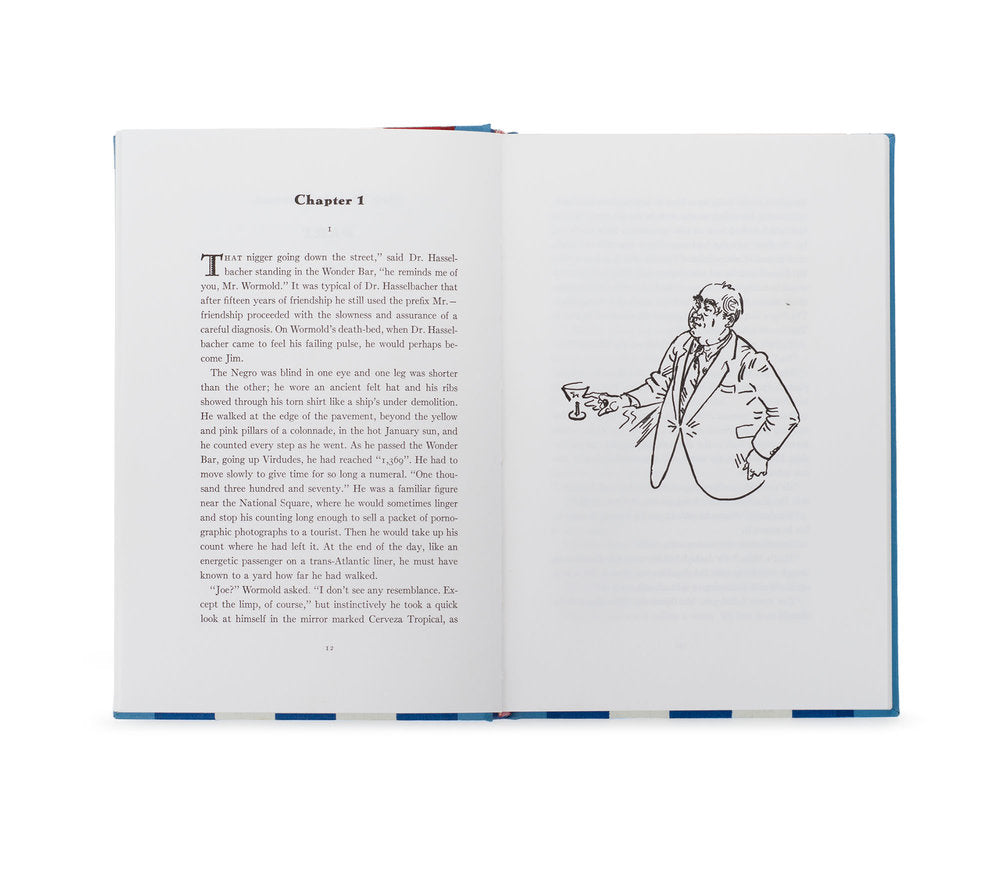Our Man in Havana
Our Man in Havana
By Graham Greene, with 28 illustrations by William Hamilton, and an introduction by Christopher Buckley, signed by the artist, May 2010. $450.00
Publication 88
ADD TO CARTGraham Greene’s great comic espionage novel Our Man in Havana presents the story of Wormold, the hapless vacuum cleaner salesman recruited by British Intelligence. This book has a special place among Greene’s more than twenty-five novels. Many of his plots are set in the exotic milieu the author inhabited as an expatriate journalist and sometime political operative, in a career that extended from the 1920s until his death, at age 86, in 1991. His thrillers The Third Man, set in Vienna right after World War II, and The Quiet American, depicting Vietnam on the eve of the United States involvement, though widely enjoyed, lack the zany inventions, touching characters, and air of whimsy that has endeared Our Man in Havana to generations of readers.
“High-comic mayhem” is how Christopher Buckley describes the consequences when the novel’s protagonist, an English expatriate living in Cuba in the 1950s, sends his superiors in British Intelligence schematic drawings of the vacuum cleaners that he sells for a meager living, passing them off as plans for secret weapons facilities. As Buckley writes in his introduction to the Arion Press edition: “The basic premise remains hilarious, if perhaps less so in the era of ‘Curveball’, the supposed Iraqi intelligence ‘asset’ who managed to convince our government of the reality of the Weapons of Mass Destruction.” Buckley and Christopher Hitchens are among the political writers of today who have rediscovered Our Man in Havana , seeing the novel as more than a comic romp, shrewdly accurate in its historical predictions and its skepticism about the competence of the intelligence community.
“The novel is almost weirdly undated--no small compliment for a book that was first published in the waning years of the Eisenhower administration.” Buckley writes. “In its adumbration of the coming conflict between the superpowers over Cuba, it is also bizarrely prescient. Within three years of the book's publication, the world was almost turned to cinders over missile silos planted amidst the Cuban verdure…. in Havana, Wormold understands that America has thrown in on the wrong side. Within months of the publication of Our Man, the foul Batista regime were casting off from the dock and headed to Miami.
“Finally,” he writes, “there is the virtuosity of the language, the hauntingly perfect phrasing. This is a book to be read slowly.”
Graham Greene (1904-1991) was a major English writer of the twentieth century, often compared in stature to his contemporary Evelyn Waugh, a fellow Catholic and social satirist. He is unusual in combining popular success with a reputation for literary art and philosophical depth. Although Greene insisted upon a distinction between his “novels” (such as Brighton Rock, The Power and the Glory, and The End of the Affair) and what he termed his “entertainments”, written for money, critics find literary merit in the latter, in Our Man in Havana in particular.
William Hamilton is a cartoonist who also writes novels and plays. A social satirist in many genres, he is best is known for his New Yorker cartoons, with their up-to-the-minute reports on the manners of the privileged class. Hamilton has been a regular contributor of cartoons to the New Yorker since 1965, and is the artist of the Arion Press edition of Moliere’s comedyTartuffe.
Christopher Buckley is a journalist, political satirist, humorist, and novelist who lives in Washington, D.C. He is editor at large for Forbes/Life and a columnist for The Daily Beast and the author of a widely-read 2008 essay, “Sorry, Dad. I’m Voting for Obama”.
FORMAT
The book is designed and produced by Andrew Hoyem and the staff of Arion Press. It is copiously illustrated with twenty-eight drawings by William Hamilton. The format is octavo, 9 by 6 inches. The text type is Bruce Old Style, composed and cast in Monotype at Mackenzie & Harris, with Greco Bold and Greco Adornado handset for display. The paper is Mohawk Superfine. The printing of the type and polymer plates for illustrations is by letterpress. The binding is full cloth over boards with the Cuban flag and titling silk-screened in three colors on front and back covers (the flag did not change with the revolution), screen-printed by Anthony Skirvin at Ape Do Good Printing in San Francisco. The edition is limited to 300 numbered copies for sale.
POSTAGE: Additional postage may apply; please inquire for details.
Share







